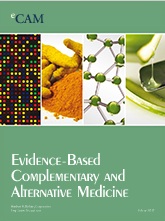
IR therapy fails to increase anterior knee blood flow velocity in knee OA treatment

IR therapy fails to increase anterior knee blood flow velocity in knee OA treatment
Local and systemic cardiovascular effects from monochromatic infrared therapy in patients with knee osteoarthritis: a double-blind, randomized, placebo-controlled study
Evid Based Complement Alternat Med. 2012;2012:583016. doi: 10.1155/2012/583016. Epub 2012 Jun 27Did you know you're eligible to earn 0.5 CME credits for reading this report? Click Here
Synopsis
73 patients with knee osteoarthritis were randomized to receive infrared (IR) therapy or sham IR therapy (placebo) to determine its effect on local and systemic microcirculation. Heart rate, systolic and diastolic blood pressures, and anterior knee blood flow velocity were measured during the 40 minute therapy and for 15 minutes postintervention. The results indicated that there was no increase in...
To view the full content, login to your account,
or start your 30-day FREE Trial today.
FREE TRIAL
LOGIN
Forgot Password?
Explore some of our unlocked ACE Reports below!

Learn about our AI Driven
High Impact Search Feature
Our AI driven High Impact metric calculates the impact an article will have by considering both the publishing journal and the content of the article itself. Built using the latest advances in natural language processing, OE High Impact predicts an article’s future number of citations better than impact factor alone.
Continue



 LOGIN
LOGIN

Join the Conversation
Please Login or Join to leave comments.